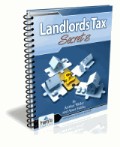What is the Difference Between Maintenance and Repairs?
Question
What is the difference between maintenance & repairs and improvements? I had a boiler that was condemned so had to have a replacement; is that classed as an improvement? Also, I had new carpetting fitted,tiling in the bathroom and some new kitchen units? Can I claim for those?
Arthur Says: When replacing something like a boiler, the general question is: is it roughly a like for like replacement? If it is, then it is classified as a repair and is allowable. If it is a much better replacement, then it classified as capital expenditure, and not allowable. This is what the Revenue have to say about the subject: What we regard as a repair will necessarily change with the passage of time to reflect technological improvements. This issue was considered in the tax case Conn v Robins Brothers Ltd [1966] 43TC266. As a result we accept that the replacement of a part of the ‘entirety’ with the nearest modern equivalent is allowable as a repair for tax purposes and not disallowable as improvement expenditure. With regards to the tiling in the bathroom and the new kitchen units, this is what the Revenue have to say: Even if the repairs are substantial, that does not of itself make them capital for tax purposes, provided the character of the asset remains unchanged. For example, if a fitted kitchen is refurbished the type of work carried out might include the stripping out and replacement of base units, wall units, sink etc., re-tiling, work top replacement, repairs to floor coverings and associated re-plastering and re-wiring. Provided the kitchen is replaced with a similar standard kitchen then this is a repair and the expenditure is allowable. If at the same time additional cabinets are fitted, increasing the storage space, or extra equipment is installed, then this element is a capital addition and not allowable (applying whatever apportionment basis is reasonable on the facts). But if the whole kitchen is substantially upgraded, for example if standard units are replaced by expensive customised items using high quality materials, the whole expenditure will be capital. There is no longer any relief for ‘notional repairs’, which is the notional cost of the repairs that would otherwise have had to be carried out. Regarding the new carpetting fitted, this is not an allowable revenue expense, because it comes under the 10% wear and tear allowance for a fully furnished residential property, or alternatively, the renewals basis for furnished and unfurnished property. |

To enrol in the 7 tax saving strategies email course complete the form below. The first module will be emailed to you immediately.

 UK Property Tax Q&A
UK Property Tax Q&A
